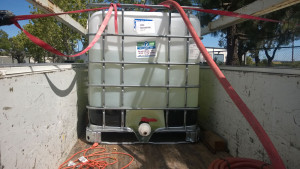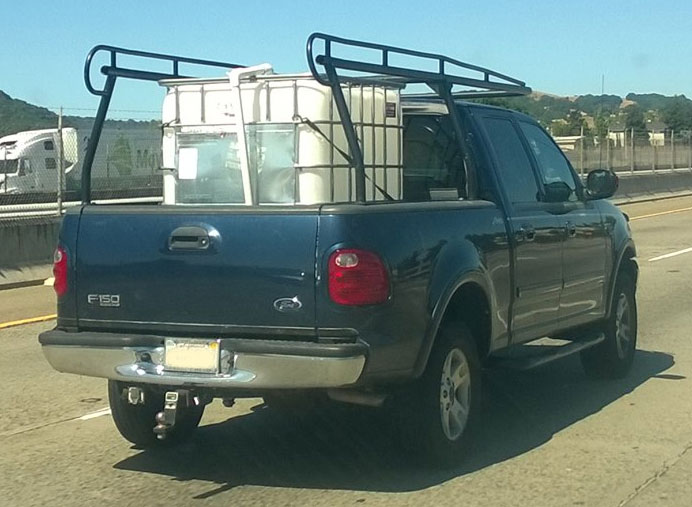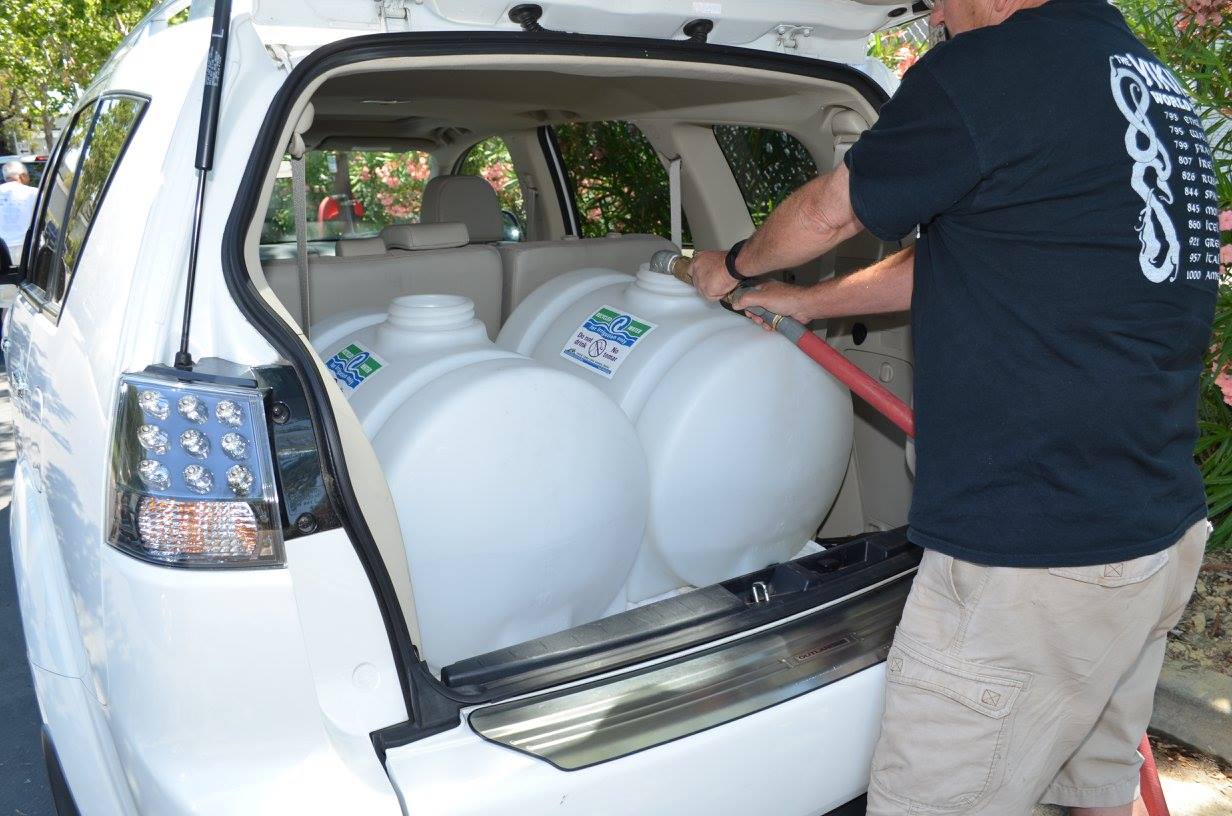
This question has plagued me for a months and something I always wondered. Why is there a 300 gallon limit at a Free Recycled Water Fill Station?
Is it because most IBC totes are 275-300 gallons? Not quite.
Is it because its written in Title 22 of the Recycled Water regulation? Good luck reading 86 pages, you won’t find it there.
Is it because any volume more and you should get a water meter for the truck hydrant fill program? Nope!
Its because “its strictly safety oriented” says Sue Stephenson of Dublin San Ramon Services District. “Most people don’t understand that water is heavy.” Each gallon of water weighs 8.34 lbs. When a 300 gallon tote is full, it weighs 2,502 pounds.
If anyone has a truck that supports 2500 pounds, then they may have some idea on how to drive so that safety is their top priority. Plus, you need to be mindful that water sloshes, where as dead weight like sand does not. I’ve seen many people try to accelerate and stop with 300 gallons of water and honestly, its both exciting and scary for all drivers involved.
Just be careful on the road, water in a tank or bag will move in the opposite direction you do and if proper precautions aren’t taken, it could be disastrous to you or those around you.
Many recycled water fill stations have mimicked their fill stations off of DSRSD’s model because that is what they did and they received regulatory approval. To make things easy, that’s what everyone else is doing.
So while the answer isn’t “sexy”, its the truth.
If the limit was raised, what would you want it raised to?
Would two 300 gallon totes on a trailer be of interest, at a weight of 5200+ pounds? Discuss in the comments and I’ll forward the information to the decision makers. 🙂



I have a one-ton dually with a payload capacity of 5,500#. I can fill two totes and still have enough capacity to stop at the local Kinders for lunch. I have a trailer that could carry two more totes (if I bought them).
The folks in Martinez won’t let me fill more than one though. This is forcing me to use twice as much fuel as I need to keep my yard watered.
With whom do we address this?
Hi Tony, thanks for your question. I’ll try to answer to the best of my ability.
There has been discussion to install a fill station for people exactly in your position. As of right now, nothing official. I would normally recommend getting a recycled water hydrant meter, but they physically don’t have any to give out. Since there has been such a demand for portable hydrant meters, manufacturers are raising prices (supply & demand) which would only mean the suppliers of recycled water would also need to raise the deposit required for the meter. :-
That’s all I know now, but I will forward your note to the decision makers at the Martinez recycled water fill station.
Good morning Tony. I forwarded your comment to the Recycled Water team at CentralSan last night and here is their response this morning:
The majority of participants in the Fill Station Program don’t have vehicles with anything near that payload capacity. The volume limit is a balance between need, efficiency and the overall safety of the program. As it is, many people are pushing the limits of their vehicles. I just learned yesterday that carrying more weight than your vehicle’s capacity voids the warranty.
Central San has a commercial recycled water program for larger volume customers. Portable meters are issued with a $1,000 refundable deposit and a vehicle inspection is required. When the meter is returned, the deposit is returned, less any usage. Recycled water through this program is charged at $3.38 per 1,000 gallons. Central San is currently out of meters, but is in the process of acquiring more.